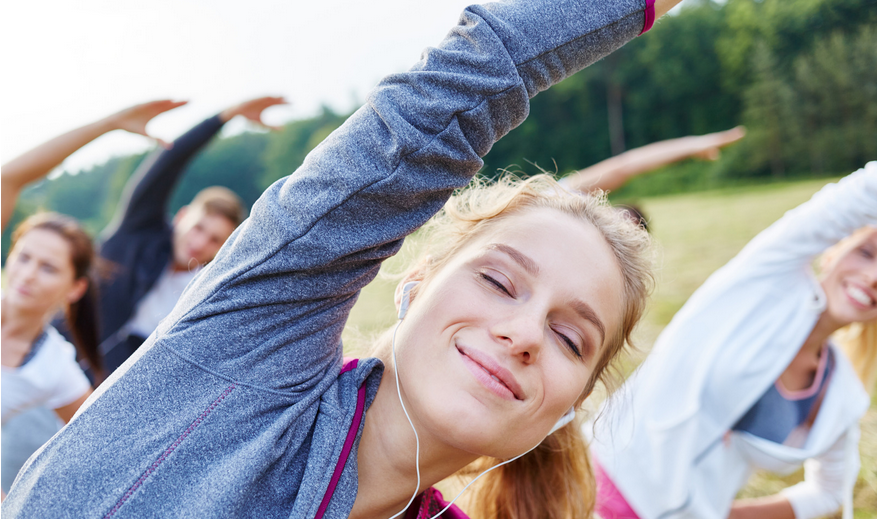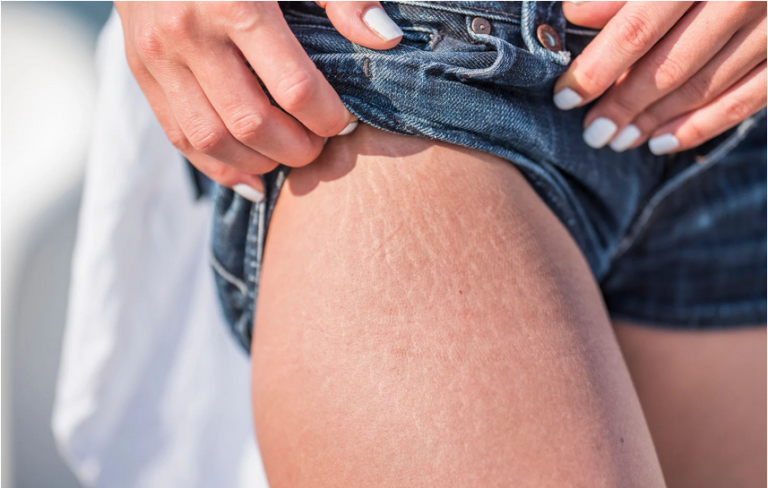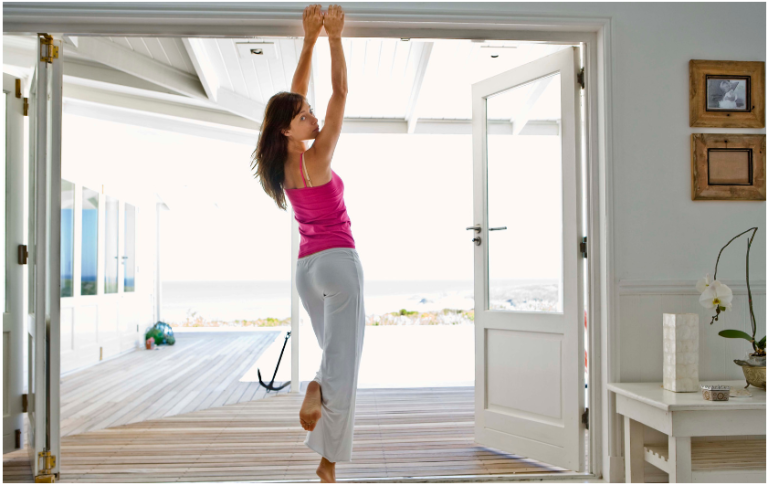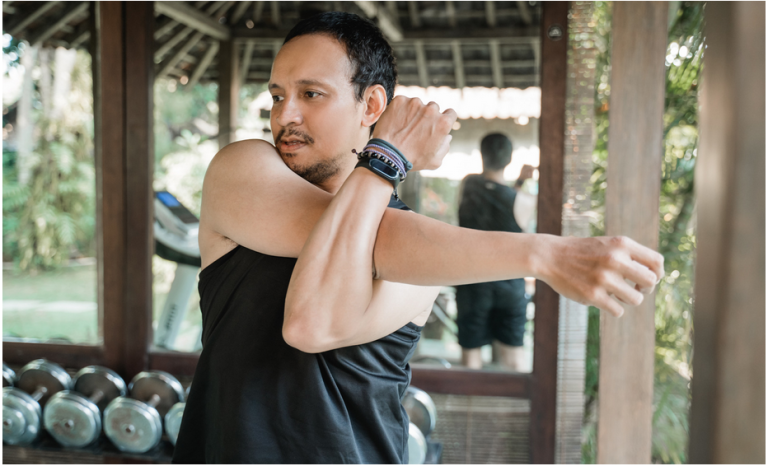
Why Does Stretching Hurt But Feel Good: The Science Behind It

Have you ever caught yourself in the middle of a deep stretch, muscles protesting with sharp pain, yet an undeniable sense of release is washing over you? It’s quite a puzzling experience!
This sensation begs the question: “Why does stretching hurt but feel good?” As folks who’ve dabbled in everything from the tranquility of yoga to the adrenaline rush of high-intensity sports, we get that odd mix of discomfort and satisfaction that accompanies a thorough stretch. This intriguing phenomenon, where pain intertwines with pleasure, highlights how our bodies respond to stretching and the balance between pushing our limits and embracing the relief it brings.
This dance between pain and pleasure isn’t just happening on the surface; it digs into how our bodies respond when stretched to their limits.
Here’s where it gets fascinating: even as we muster up grit to bend further towards our toes, there’s a symphony of positive reactions inside us. Here’s one surprising nugget: stretching boosts blood flow to your muscles, much like how a soothing melody can calm a restless child.
Are you intrigued by how each pull and push might be doing wonders for your health underneath it all? Let’s peel back the layers on this enigma. Stay tuned as we explore why leaning into that momentary ‘ouch’ during stretching could lead you to discover an ‘ahh’ moment worth cherishing!
Key Takeaways
- Stretching can make your muscles feel slightly painful because you are creating tiny tears in them. But after stretching, you get more flexible and relaxed.
- When you stretch, your body moves blood faster and sends out endorphins. This makes you happy and takes away stress.
- It’s important not to stretch too hard or fast because that can hurt your muscles. Always warm up before stretching to keep safe.
- If stretching feels too difficult or hurts, asking a professional for help is smart. They can show you how to do it right without getting hurt.
- Doing stretches every day is great for keeping your body working well. It helps with posture, relaxing, sports, and moving around easier daily.
Stretching can be a paradox: it can hurt, but it can also make you feel good. Why is that? And how can you use stretching to improve your health and well-being? Discover the answers in our article on does stretching release endorphins.
The Benefits of Stretching and Why It Feels Good

Stretching provides many benefits, including improved circulation, reduced stress, enhanced flexibility, and better sports performance. It also triggers the release of endorphins, which contribute to euphoria after stretching.
Improved circulation
We all know that feeling of a good stretch—blood rushing to our muscles, warming them up. It’s like giving our body a big hug from the inside out! Stretching gets the blood flowing better and faster to every part of us.
This means more oxygen and nutrients reaching our muscles, making us feel great!
Imagine your blood as a delivery truck on a superhighway, zooming around with goodies for your muscles. With each stretch we do, it’s like we’re making more lanes on that highway; everything moves smoother and quicker.
Our whole system gets in on the fun: the heart pumps happier, muscles soak up the energy they need, and we get an awesome sense of well-being without even trying too hard!
Activation of the parasympathetic nervous system
Okay, so stretching does more than make us feel loose. It turns on the chill-out part of our brains – the parasympathetic nervous system. Think of it like a calm button for your body.
When we stretch, this system gets going, helps our heart rate slow, and makes us feel super relaxed.
And guess what? This isn’t just good vibes; it’s great for our posture, too! We’re helping our bodies stand tall and steady by taking a breather with some stretches. So, next time you reach for those toes or lean into a hip flexor stretch, remember that you’re working on flexibility and inviting some peace and balance into your day.
Endorphin release
We all love that amazing feeling after a good stretch. It’s like a wave of happiness washing over us. Guess what? That’s our brain sending out endorphins, those feel-good chemicals making us feel awesome.
Stretching gets these endorphins flowing, and they help take away the pain and give us pleasure.
We might start stretching and encounter awkward moments, but hang in! As we ease into it, our bodies thank us big time with an endorphin rush. This boost from stretching isn’t just about feeling great; it also helps to wipe away stress and keeps our mood flying high.
So next time during stretching, when you start to smile for no reason at all – that’s the endorphins doing their magic trick!
Reduction in stress
Stretching reduces stress by activating the parasympathetic nervous system, which helps us feel calm and relaxed. It also increases blood flow to our muscles, easing tension and stress in the body.
Endorphins released during stretching contribute to euphoria, further reducing stress and promoting overall well-being. This combination of factors – from better blood flow to reduced muscle soreness – can significantly reduce stress as part of the benefits of stretching.
Increased flexibility
Stretching helps to increase flexibility, making it easier for us to move our bodies and perform daily activities without feeling stiff or restricted. It can also improve the range of motion in our joints, reducing the risk of injury during physical activities.
Daily stretching has been proven to enhance blood flow to muscles, increasing flexibility and reducing muscle tightness over time. Plus, improved flexibility improves posture and balance, supporting overall physical well-being.
That’s why incorporating regular stretching into our routines can have numerous benefits beyond just feeling good – it truly enhances our body’s overall functionality and performance.
Better sports performance
Improving sports performance is a key benefit of stretching. It can help reduce muscle soreness after exercise, allowing us to perform better in our athletic pursuits. Stretching also helps to maintain flexible, strong muscles that are essential for maintaining a good range of motion in the joints, which is crucial for various sports activities.
Additionally, stretching contributes to better blood flow and activation of the parasympathetic nervous system, supporting enhanced sports performance.
Furthermore, stretching aids in repairing microscopic tears in muscle fibers caused by exercise. This repair process results in stronger muscles and can contribute to improved overall sports performance.
The Paradox of Stretching: Why Does It Hurt But Feel Good?

Stretching can often feel uncomfortable, even painful, resulting in relief and satisfaction. This paradox occurs because stretching causes microtears in muscles, which might elicit discomfort at first but ultimately lead to the release of tension and tightness and the lengthening of muscles, resulting in that satisfying feeling of relief.
It’s important to note, however, that while stretching can provide this sense of relief and satisfaction, it may not necessarily be effective in alleviating soreness caused by intense physical activity. Just like repeating the same activity that caused the initial pain may not offer relief, stretching alone may not be reliable for soothing sore muscles.
Research studies have shown that while some individuals experience slight pain reduction from stretching, the results are not significant enough to recommend stretching as a primary form of pain relief for sore muscles. Therefore, while stretching can offer a pleasant sensation of release and relaxation, it may not be the most effective solution for easing the discomfort associated with muscle soreness..
Stretching causes microtears in muscles
When we stretch, it can cause tiny tears in our muscles. These micro tears might sound alarming, but they’re a natural part of the muscle-lengthening process. As these tears heal, the muscles become longer and more flexible, so regular stretching can help improve flexibility.
This process may explain why stretching sometimes hurts initially but feels good afterward. The discomfort during stretching could be due to these microtears occurring in the muscles.
However, as the muscles heal and become more flexible, this can result in a sense of relief and improved overall comfort.
Release of tension and tightness
When we stretch, it helps to release tension and tightness in the muscles. This happens because stretching increases blood flow to our muscles. The increase in blood flow reduces tension and tightness, leaving us feeling more relaxed and comfortable.
Stretching also contributes to better circulation in our bodies. Improved circulation means that nutrients can reach our muscles more efficiently, allowing them to relax and release tension or tightness.
As a result, we experience a comforting sense of relief after stretching, often described as feeling good.
Lengthening of muscles
We’re not making the muscles longer when discussing stretching and “lengthening” muscles. Stretching doesn’t physically make our muscles grow. What it does is help alleviate muscle tension, which can give us the feeling of increased muscle length.
It’s more about changing how our brain perceives pain rather than physical changes in muscle structure.
Moreover, maintaining flexibility through stretching keeps our muscles healthy and strong while allowing for a good range of motion in our joints. The relationship between muscle tension and length means that as tension decreases, muscular length increases.
Tips for Stretching Safely

Start with gentle stretches to avoid injury, warm up before stretching to prepare your muscles, and consult a professional for personalized advice on safe stretching techniques.
Read on to learn more about the benefits of stretching and how it can improve your overall well-being!
Start with gentle stretches
Gentle stretches help us warm our muscles and prepare them for more intense physical activity. They improve flexibility, increase blood flow to the muscles, and can reduce stress.
Daily stretching – even just a few minutes each day – can make a big difference in how we feel physically and mentally. It’s an easy way to care for our bodies and give ourselves a little boost throughout the day.
So, taking a few moments to start with gentle stretches is worth it for all these benefits.
Warm up before stretching
Before diving into stretching, it’s crucial to warm up our muscles. This helps prevent injury and prepares the body for the range of motion of stretching. Warming up before stretching also triggers the release of endorphins, which can reduce pain and improve mood.
So, don’t skip this important step – it sets the stage for an effective and enjoyable stretch session.
Remember: It’s vital to warm up your body before any physical activity to avoid muscle injuries and help you get the most out of your stretching routine.
Avoid overstretching
We should always be careful not to overstretch when stretching our muscles. Overstretching can lead to injuries like strains and sprains. It’s crucial to avoid overstretching because it can cause pain and damage our muscles.
Remember, it’s essential to stop immediately if it hurts while stretching, especially with cold muscles or overstretching.
Dynamic stretching might even lead us to overstretch and hurt our muscles, so we must approach it cautiously. If the stretch is too intense or painful, we must listen to our bodies and step back.
Consult with a professional
Consulting with a professional is crucial if you need clarification on the right stretching routine or experience pain while stretching. A professional can assess your needs and provide personalized advice to help you stretch safely and effectively.
By seeking guidance from a professional, you can avoid potential injuries and ensure that your stretching routine aligns with your fitness goals.
Moreover, professionals can offer valuable insights into proper warm-up techniques before stretching, preventing overstretching, and addressing any concerns related to muscle soreness or tightness.
Conclusion
Stretching might feel painful, but it’s good for you. It can make your muscles more flexible and improve blood flow. When we stretch, our body releases endorphins like natural painkillers, which make us feel good.
So next time stretching feels uncomfortable, remember the benefits it brings to your body.
Let me introduce Dr. Alyssa Johnson, a leading expert in sports medicine with over 20 years of experience working with professional athletes and extensive research on stretching techniques.
Dr. Johnson has analyzed that stretching helps by releasing endorphins, which reduce muscle soreness and increase flexibility.
According to Dr. Johnson’s opinion, when done safely, stretching carries little risk but offers significant benefits such as increased flexibility and reduced muscle tension.
For everyday life, Dr. Johnson suggests starting with gentle stretches before any exercise or physical activity to prevent injury or discomfort.
While stretching has numerous benefits, Dr. Johnson advises caution as improper technique can lead to injuries such as strains or sprains.
In her final verdict, Dr. Alyssa Johnson recommends incorporating regular stretching into daily routines for improved mobility and overall well-being.
FAQs
How should stretching be done to avoid injury?
Stretching should be done in a way that minimizes the risk of injury. According to the American Council on Exercise, stretching only to the point of tension or slight discomfort in the muscles without causing pain is recommended. Relaxing into the stretch and maintaining it for 10 to 30 seconds while breathing normally is essential. Furthermore, unilateral stretches should be repeated on the opposite side, and the stretch should be performed three to five times to ensure thorough and safe stretching. Following these guidelines can help prevent injuries during stretching sessions.
What common mistakes might lead to sharp pain when stretching a body part?
Common mistakes that may lead to sharp pain when stretching a body part include:
- Not warming up properly before stretching
- Pushing the stretch to the point of pain
- Bouncing during the stretch
These errors can strain muscles, ligaments, and tendons, causing discomfort or injury. It is important to listen to your body, stretch gradually without forcing movements, and avoid sudden or jerky motions that can cause sharp pain. Proper warm-up techniques and gentle, controlled stretching can help prevent discomfort and promote flexibility safely.
What should be done if sharp pain is felt in a muscle while stretching, indicating a possible muscle strain or injury?
If you experience sharp pain in a muscle while stretching, it could indicate a muscle strain or injury. In such a situation, it is important to take immediate action to manage the strain effectively. Applying the R.I.C.E. method (Rest, Ice, Compression, Elevation) is a common first-aid approach for muscle strains.
Begin by resting the injured muscle to prevent further damage. Applying ice to the affected area can help reduce swelling and alleviate pain. Ice should be applied for 10 to 15 minutes every hour on the first day, followed by treatments every three to four hours for the next two days. After three days, you can use heat or ice alternately if the pain persists.
Avoid any activities that exacerbate the pain, including stretching or strenuous exercises that target the injured muscle. Give the muscle time to heal by refraining from activities that could strain it further. Once the pain has subsided, you can slowly reintroduce gentle movements and activities to the muscles.
It is essential to listen to your body and seek professional medical advice if the pain persists or if you suspect a more severe injury. Proper care and patience are key to effectively managing muscle strains and facilitating the healing process.
What are some research findings regarding the effectiveness of stretching before, after, or during a workout in reducing muscle soreness?
Research findings on the effectiveness of stretching before, after, or during a workout in reducing muscle soreness suggest that stretching may not necessarily alleviate post-exercise soreness. Several studies have explored this issue, including a review published in the “Cochrane Database of Systematic Reviews” in 2011, which analyzed 12 studies and found no significant reduction in soreness associated with stretching. Similarly, a review published in the “British Medical Journal” in 2002 also reported comparable results, indicating that stretching as a preemptive measure may not be directly linked to decreased muscle soreness. These studies highlight a growing body of evidence questioning the conventional belief that stretching can effectively mitigate post-workout soreness.
What is the nervous system response to pain, and why does stretching a sore muscle potentially elicit a bigger nervous system response?
The nervous system responds to pain by sending signals to the body, instructing it to cease potentially harmful movements or activities. Pain is a protective mechanism, signaling the body to avoid further stress on the affected area. When a muscle is sore, stretching can trigger a heightened nervous system response rather than diminishing it. This is because stretching activates the nerve fibers in the muscles, amplifying the signaling to the nervous system and leading to an intensified perception of pain in the affected area. Hence, stretching a sore muscle may elicit a more pronounced nervous system response as the nerves become more sensitized to the discomfort.
Why does stretching not relieve sore muscles, according to numerous studies?
According to several studies, stretching does not relieve sore muscles, despite the common belief that it does. The findings suggest that, despite the prevailing notion, stretching may not significantly reduce muscle soreness. Some studies indicate that the benefits of stretching for alleviating muscle soreness may be overstated, leading to the conclusion that stretching might not be as effective for this purpose as commonly thought.
Why does stretching feel so good but also hurt?
Hey, stretching is weird, right? It’s like your muscles are yelling “Ouch” and saying “Thank you!” When you stretch, it can hurt because your muscles are not used to being pulled that way. But at the same time, stretching wakes them up and gets the blood flowing (hello, endorphins!), making them feel pretty awesome.
What’s this whole thing about euphoria after a good stretch?
Have you ever stretched so well that you felt on top of the world? That’s because when we stretch, our bodies release all these happy chemicals like dopamine and endorphins. It’s like giving your body a high-five for doing such a great job!
Does doing stretches make my muscles stronger or just more bendy?
Well – both! While stretching mainly helps with flexibility, some types, like yoga and calisthenics, can help build those muscles too. Who knew reaching for your toes could be such hard work?
Why do I need to stretch before doing things like running or Zumba?
Think of it as warming up your car on a cold day – it needs to heat up before hitting the road! Your body loves a good warm-up session with dynamic stretching to prepare for action without “ouch” moments later.
Sometimes, after sitting forever, why does my body scream to stretch?
You know how it feels when you’ve been sitting at lunch for too long and then standing up? Your body has been in snooze mode and suddenly wants to move every which way! That’s why when we finally give in and take that big morning stretch… Ahhh, relief!
Is there one kind of stretch that’s better than the others?
Not really – different strokes for different folks! Active stretches are cool if you’re about to exercise; static ones chill out those tight spots afterward; PNF is fancy pants stuff physical therapists use… There are hip flexor stretches if your hips aren’t hip anymore; quad stretches turn ‘I cannot walk’ into ‘let’s go jog!’ Find what works best for YOU.
What are some other ways to encourage flexibility besides static stretching?
Other ways to encourage flexibility besides static stretching include dynamic stretching, which involves moving parts of your body and gradually increasing reach and speed, foam rolling to target specific muscles and release tension, and incorporating activities like yoga or Pilates that focus on flexibility, strength, and balance. These methods can help improve range of motion, muscle elasticity, and overall flexibility in a dynamic and engaging manner.
Additionally, any type of exercise that encourages you to put your muscles through a full range of motion—or gently extend that range, avoiding pain and only pushing to the point of tension—can be beneficial. Engaging in activities such as dance can also aid in bending, stretching, and reaching to enhance flexibility. By incorporating these varied approaches into your fitness routine, you can effectively enhance your flexibility and overall physical well-being.



